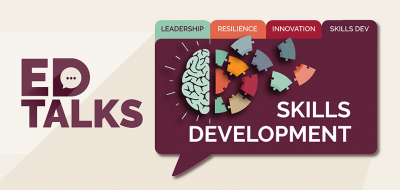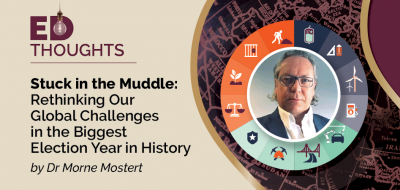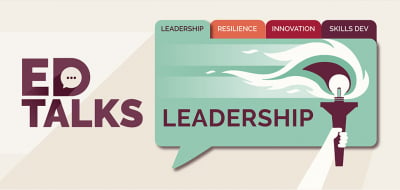A few years ago, I returned from a two-week safari in Botswana, which was not a holiday, but an adventure. This turned out to be an opportunity for profound leadership reflection. We woke up before the crack of dawn, spent hours in a game vehicle spotting game and then finished the day, with our vehicle parked under a baobab tree, watching the sunset over a waterhole. On many of the days, we saw lion, leopard, hippo, elephant and giraffe, not to mention the many antelope species.
After an eventful day of game spotting, we knew when we arrived back at camp that it would be an industrious evening preparing dinner on the campfire and, once again, while there was still daylight, planning for the next day. Such active days made me appreciate the sunset break every evening, as this gave me the opportunity to reflect on the day, have a drink, and chat to my friends about our game sightings, all while watching the sunset… and what a sunset it was! Each day the golden ball descended beyond the earth and I watched as the rays reflected on the water for the last few minutes of the day.
Back at work, while sitting in my office, I couldn’t help but think of that evening ritual and how it relates back to the workplace and leaders. How often do leaders, at the end of the day, hold out a mirror and reflect on the day? Joseph Raelin, in 2002, wrote “
“Is it possible that the frenetic activity of the executive is a drug for the emptiness of our organisational souls, that constant action may merely serve as a substitute for thought?”
The Essence of Leadership Reflection in Today’s Dynamic Work Environment
Leadership reflection is much more than thinking about the day’s work during the commute home. It requires a lot more thought than that. What is reflection? What does looking in the mirror involve? It is the practice of every so often stepping back to contemplate the meaning of what has recently transpired in our lives and in that of others. It involves thinking about our thinking – resulting in an understanding of an experience that may have been overlooked in practice and is hence a form of deep learning. It is this deep learning that helps us understand ourselves.
It must be acknowledged that the act of leadership reflection is not easy and takes time to master. We are not accustomed to reflecting, as we spend so much time taking action. And when we do reflect, we do not always like what the mirror tells us, as the wicked queen in the tale of Snow White discovered in the Grimms’ fairy tale when the mirror spoke. But it does allow us to see the truth. Reflection is a way for leaders to gain a genuine understanding of themselves and their environment.
Reflection therefore gives leaders increased awareness in critical and complex situations, as understandings are reframed and action can be taken. In today’s world of work, we need leaders who are aware of the dynamics of situations and who allow for questioning to take place, making it possible for people to challenge without fear.
Tips for Applying Leadership Reflection Whilst Looking in the Mirror
1) Choose a time of day that suits you:
Spend quality time when you are not interrupted. Build in reflection time into your daily planning. Take time to think, otherwise, you rush from one activity to the next without pause. One of my participants on a leadership course mentioned that he spends 10 minutes sitting in a boardroom with no computer or paper so that he can think about his thinking. Another mentioned that she walks around the park at the end of the day to reflect before she goes home.
2) Re-run in your mind the events that took place during the day:
This provides insight into your own strengths and development areas, thus enabling you to be more effective in the future. There are many sources for reflection such as everyday events, positive experiences, negative experiences, eventful incidents, unusual incidents, routine activities, important events and meaningful events.
3) Apply a model or framework:
Driscoll’s (2000) three questions of WHAT, SO WHAT and NOW WHAT.
WHAT…
What is the purpose of returning to this situation, what happened, what was my reaction?
SO WHAT…
How did I feel, what were the effects of my actions, what have I noticed about my practice?
NOW WHAT…
What are the implications of this analysis – for me and others, what is the main learning from this experience and reflection?
4) Reflect through writing
Journal your thoughts. Writing using a waterfall technique – where you do not censor your thoughts – is a common and easy technique.
5) Reflect with others
Reflection does not have to be individual. Ask for feedback: Just as I chatted to my friends at the waterhole every evening, chat to your colleagues. Ask for feedback by engaging with trusted colleagues. Feedback is necessary as it positions different viewpoints for you to consider while you are reflecting.
6) Link your leadership reflection to action
Don’t just leave ideas in the air. Once you have finished thinking about your thinking link the thinking to actionable items.
If you can take these simple tips to heart, it will help you develop the skill of reflection that is necessary for the 21st-century leader. Even more, it will embed your deep learning, as learning can no longer only be something you do when enrolled at a university or on a course.
written by





